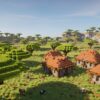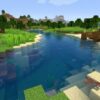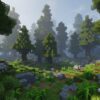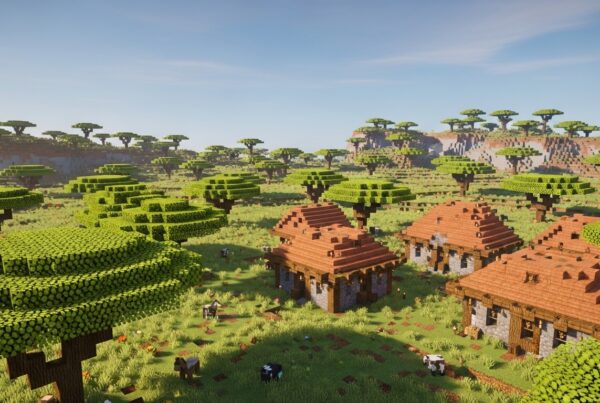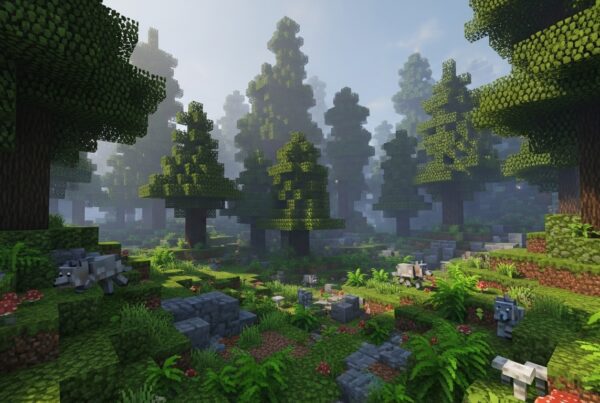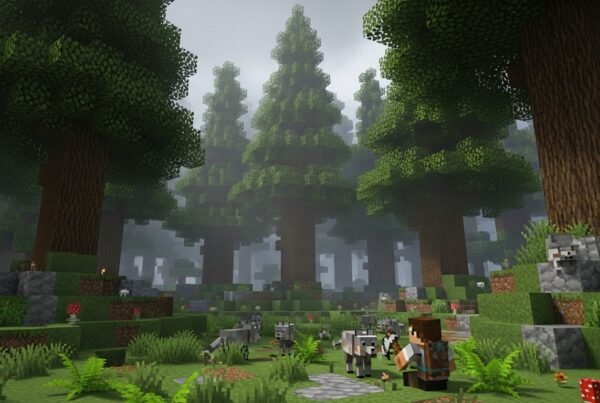The River Biome in Minecraft may look like a simple stretch of water, but it plays a vital role in connecting the world’s landscapes. Acting as natural boundaries, travel routes, and resource hubs, rivers are essential for players looking to fish, gather clay, or build scenic bases. Whether you’re exploring or surviving, mastering the River Biome can make your Minecraft world both more functional and beautiful.
River Biome Overview
The River Biome is a narrow water-filled terrain feature that winds between other biomes, forming realistic waterways across the Overworld. It’s characterized by shallow to medium-depth water, clay and gravel riverbeds, and sand-covered shores.
Rivers often serve as biome borders, separating forests from plains, or mountains from valleys. They can also connect to oceans, making them a natural navigation system for explorers using boats.
Biome Category: Wetland
Dimension: Overworld
Prevalence: Common – generated between land biomes
Climate and Location
Rivers can generate in nearly every climate zone of the Overworld. Their visual appearance changes based on temperature and surroundings:
- Warm Biomes: Deep blue water, lush greenery (near jungles or swamps).
- Temperate Biomes: Clear blue water, standard vegetation (plains, forests).
- Cold Biomes: Frozen River variants with ice-covered surfaces.
- Mountainous Regions: May form steep waterfalls or deep gorges.
Rivers frequently flow between contrasting biomes, such as desert and forest, providing a striking transition between ecosystems.
Blocks and Natural Resources
Rivers are rich in essential crafting and building materials. Here’s what you’ll typically find:
| Resource | Where Found | Primary Uses |
|---|---|---|
| Clay | Riverbeds and shallow water | Bricks, terracotta, decorative blocks |
| Gravel | River floors and banks | Flint, concrete |
| Sand | Shores and edges | Glass, concrete, TNT |
| Dirt & Grass Blocks | Banks and shallows | Farming, landscaping |
| Seagrass | Underwater areas | Decoration, turtle breeding |
| Sugar Cane | Along riverbanks | Paper, books, rockets |
Tip: Clay is most abundant in rivers—use a shovel with Fortune or Silk Touch for maximum yield.
Vegetation and Terrain Features
- Seagrass generates in most river biomes, though it’s absent in Frozen Rivers.
- Sugar Cane grows naturally along the riverbanks, especially in warm and temperate zones.
- Dry Riverbeds can occasionally form in high mountain areas, where the river generates above sea level without filling with water.
- Rivers can loop, split, or even form interconnected networks, offering interesting terrain for navigation and building.
Mobs That Spawn in River Biomes
Rivers support a small but diverse selection of aquatic and amphibious life. The exact spawn mechanics differ between Java and Bedrock editions.
Passive and Neutral Mobs
| Mob | Spawn Conditions | Notes |
|---|---|---|
| Salmon | Light level > 0, Y = 50–63 | Common in colder or temperate rivers |
| Cod | Similar to salmon | Found in temperate rivers |
| Squid | Water blocks between Y = 46–62 | Drops ink sacs |
| Frogs | Warm biomes near rivers | Available since 1.19 |
| Turtles | On nearby beaches | Often wander into river water |
Hostile Mobs
| Mob | Spawn Details | Danger Level |
|---|---|---|
| Drowned | Spawns in dark water or converts from zombies submerged | Moderate – common at night |
| Glow Squid | Found in darker, connected caves or deep water | Passive, good for glowing ink sacs |
Java Edition Spawn Weights (Approx.):
- Drowned: 100 / 615 total weight
- Squid: 10 / 615
- Salmon: 15 / 615
Tip: Drowned mobs spawn more frequently in Bedrock Edition, making rivers more dangerous at night.
Structures and Nearby Features
While rivers don’t have unique structures, they often pass close to important ones:
- Villages – Commonly generate near rivers in plains and savanna regions.
- Ruined Portals – Occasionally spawn along riverbanks.
- Caves & Ravines – River erosion can expose entrances, perfect for early mining.
- Beaches & Ocean Biomes – Rivers often flow into them, forming estuaries.
Using boats, players can easily travel between biomes—rivers are effectively Minecraft’s natural highway system.
Gameplay Tips and Survival Strategies
Rivers provide both aesthetic appeal and strategic value for survival players.
Building Tips
- Build a dock or fishing hut for easy food access.
- Create bridges for quick crossing or aesthetic landscaping.
- Construct waterwheel bases or aqueducts for immersive builds.
Survival Tips
- Use torches and fencing to keep drowned mobs away from your riverside base.
- Always carry a boat for emergency escapes or exploration.
- Farm sugar cane and fish for renewable food and materials.
Best Uses for River Resources
| Resource | Usage | Benefit |
|---|---|---|
| Clay | Smelt into bricks or craft terracotta | Aesthetic building materials |
| Fishing | Catch fish and rare treasure | Food, XP, enchanted items |
| Seagrass | Breed turtles | Renewable ecosystem |
| Sand & Gravel | Combine for concrete | Durable, colorful building blocks |
| Squid Ink | Craft books and banners | Decorative utility |
Pro Tip: Combine a Fishing Rod with Luck of the Sea III to maximize enchanted loot while fishing in rivers.
River vs. Frozen River Biomes
| Feature | River | Frozen River |
|---|---|---|
| Water State | Flowing | Frozen with ice |
| Temperature | 0.5 | 0.0 |
| Mobs | Fish, squid, drowned | None (due to ice cover) |
| Vegetation | Seagrass, sugar cane | None |
| Resources | Clay, sand, gravel | Snow, ice |
| Best Use | Fishing, travel | Ice harvesting, speedways |
Frozen Rivers are perfect for gathering packed ice or frosted blocks, while regular Rivers remain superior for fishing and resource collection.
Technical Data
| Parameter | River | Frozen River |
|---|---|---|
| Biome ID (Java) | minecraft:river | minecraft:frozen_river |
| Temperature | 0.5 | 0.0 |
| Downfall | 0.5 | 0.5 |
| Category | Wetland | Icy |
| Depth | -0.5 | -0.5 |
| Scale | 0.0 | 0.0 |
| Water Color | #3F76E4 | #3938C9 |
Including these details helps technical players and map creators identify biome data in custom worlds or datapacks.
Generation and Geography Details
- Rivers are 1–3 chunks wide, meandering across the world.
- They connect to oceans, cut through mountains, or form loops.
- Occasionally generate dry in high elevation areas.
- Classified as “Wetland Biome Type” in world generation logic.
Version History
| Version | Change |
|---|---|
| Beta 1.8 (2011) | Rivers introduced in the Adventure Update. |
| 1.0.0 (2011) | Frozen River variant added. |
| 1.13 (2018) | Aquatic Update: added fish, drowned, seagrass, and realistic underwater features. |
| 1.18 (2021) | Improved terrain blending and river elevation. Rivers now flow more naturally through mountains. |
| 1.19 (2022) | Frogs introduced, spawning near warm rivers. |
Fun Facts and Trivia
- Rivers were originally intended to connect all oceans but still sometimes terminate inland.
- You can use rivers as natural biome borders when building maps or adventure servers.
- Rivers help determine village placement and farm locations in world generation.
Conclusion
The River Biome is more than a peaceful waterway — it’s one of Minecraft’s most practical and visually pleasing environments. From gathering clay and sugar cane to fishing and exploring, rivers are essential for both survival and creativity.
Whether you’re building a cozy dockside home or charting a new route to the ocean, the River Biome offers endless opportunities for adventure and resource gathering.

